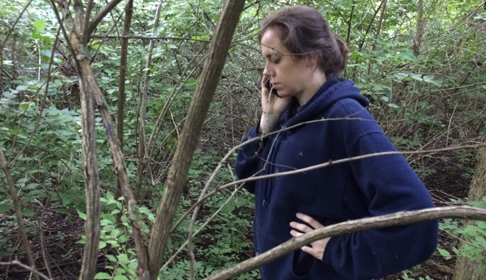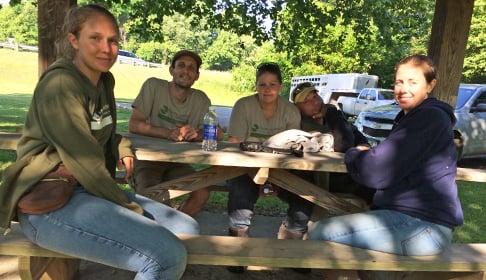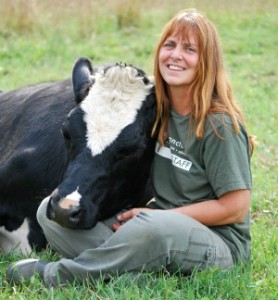 It’s no wonder that Farm Sanctuary National Shelter Director Susie Coston is known as “The Farm Animal Whisperer.” She has two decades’ worth of experience running animal sanctuaries, and in her spare time (ha!), she leads our annual Farm Animal Care Conference and mentors others who have started their own sanctuaries.
It’s no wonder that Farm Sanctuary National Shelter Director Susie Coston is known as “The Farm Animal Whisperer.” She has two decades’ worth of experience running animal sanctuaries, and in her spare time (ha!), she leads our annual Farm Animal Care Conference and mentors others who have started their own sanctuaries.
She shared her valuable insight into the lives and care of farm animals and what it’s like to work in the animal protection movement in a recent Reddit AMA (Ask Me Anything). Here are some of Susie’s most upvoted responses to Reddit member questions (lightly edited for length).
On encouraging others to live a more compassionate lifestyle:
[Be] patient with others and really [reach] out and meet them where they are. If you are a good cook, unlike myself, inviting people for a very delicious vegetarian/vegan meal and just being warm and positive is a good start. … Everyone has a gift — artists, chefs, writers, storytellers, etc. — and using that gift to spread the message is a great way to contribute and encourage others to be more compassionate.
 On getting along with meat-eaters, despite knowing the plight of farm animals:
On getting along with meat-eaters, despite knowing the plight of farm animals:
I always feel it is somewhat challenging especially when they seem to talk about it more knowing I am vegan than I think they would have if I were not. I feel you have to meet people where they are, however, since I put my parents, for example, through a bit of hell most of my teenage life — so me showing intolerance to them for not believing what I believe would be a bit hypocritical. I also see that by not fighting with them about it — by still loving people and just being who you are — many eventually change — maybe not completely but in some ways. My parents are eating far less meat, for example!
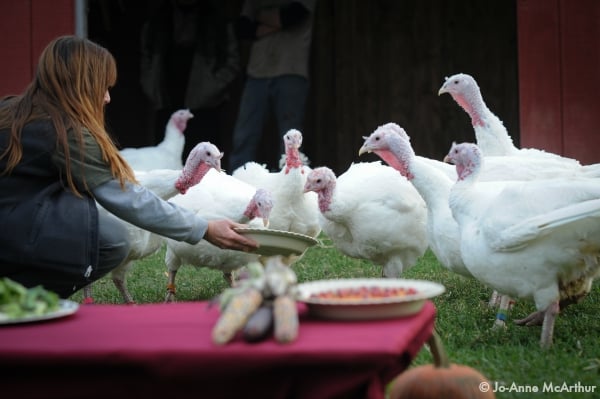
On people’s misconceptions about farm animals:
I think it is easy to see them differently because the only exposure most people have to farm animals is when they see them in an environment that is not natural — where they are frightened, where they are overcrowded, not receiving individualize care. We see them here being themselves — happy, sad, funny, etc. When they are not frightened they grieve more outwardly, they play, they are just more comfortable being themselves. … I think there is such a misconception about their sentience — especially birds, since they seem to be harder to relate to than mammals. We see birds — especially mothers arriving with babies, who sleep with a wing wrapped around their child to protect them. It is incredible. Continue reading

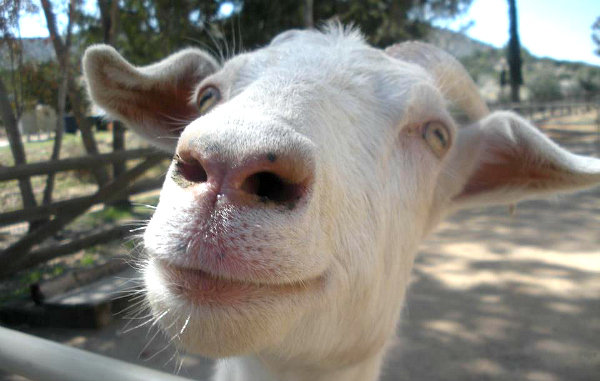
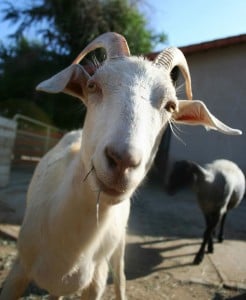
 It was only four years ago that we said hello to Prince. Police officers who pulled over a car for speeding found the two-week-old Saanen stuffed in a bag inside. Prince was seized and brought to the San Gabriel Valley Humane Society. From there we welcomed him to the shelter.
It was only four years ago that we said hello to Prince. Police officers who pulled over a car for speeding found the two-week-old Saanen stuffed in a bag inside. Prince was seized and brought to the San Gabriel Valley Humane Society. From there we welcomed him to the shelter.